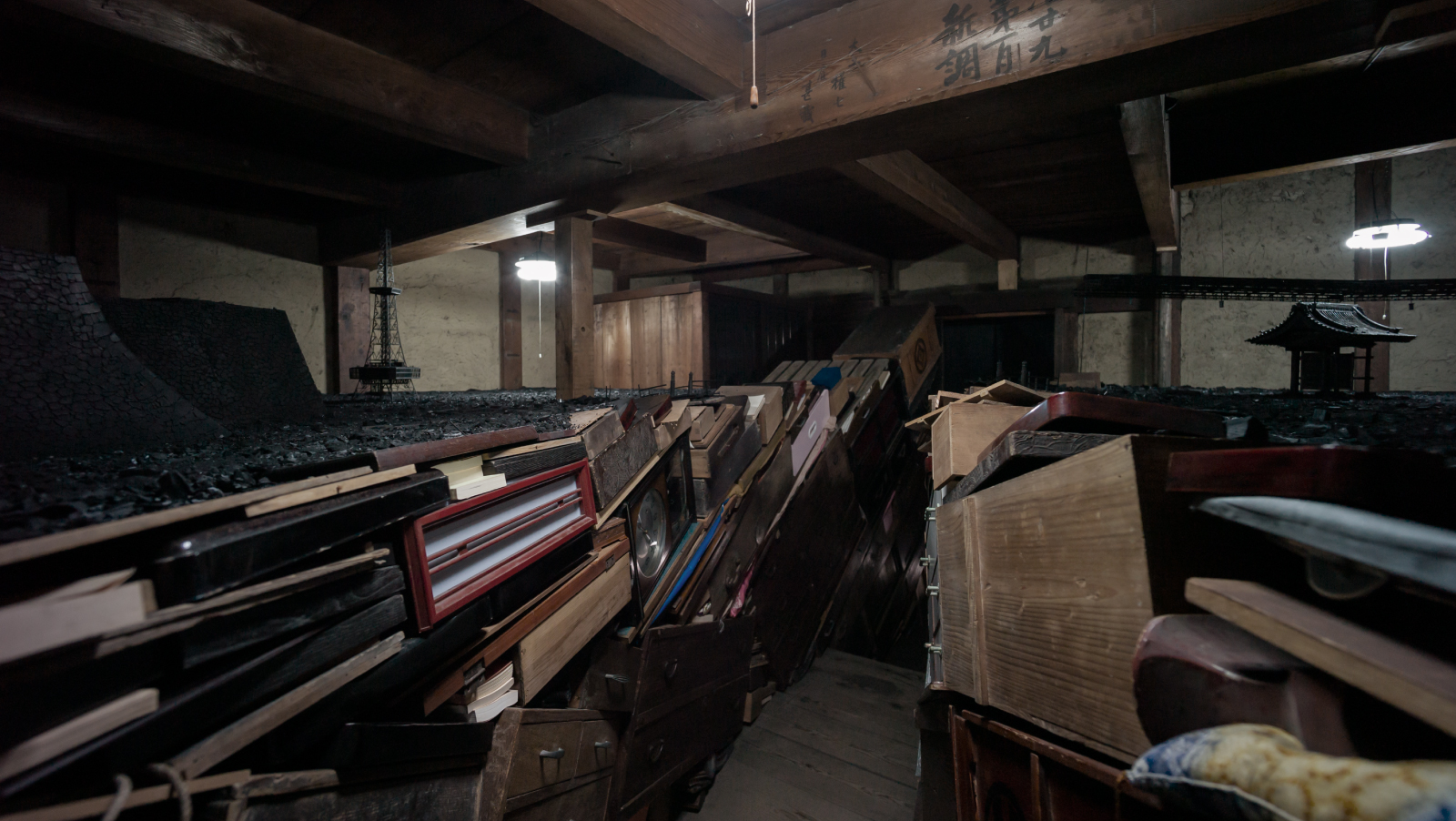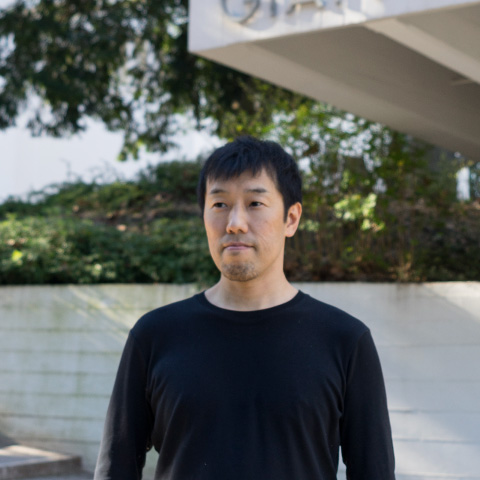
The City in the Town Warehouse
Installation view at Aichi Triennale 2019
The City in the Town Warehouse, 2019
Photo: Masahiko Toyama
After proceeding along a narrow corridor through cabinets and other pieces of furniture piled up in the storehouse, and stepping from the dirt floor up to the next level, a scenery that is entirely covered with the blackish color of charcoal stretches in front of the visitor's eyes. The Shikemichi area, the name of which originates from a 7-meter-wide road that was built here for fire prevention purposes, is particularly characterized by the historical fact that every house has its own "godown" outbuilding that prevents fire from spreading. When identifying the corridor that the visitor walks through the exhibition space with the nearby Hori River, one understands that the entire layout is based on a map of the area.
The use of charcoal refers to the fact that the Ito Residence, the venue of this exhibition, originally belonged to a merchant who dealt with charcoal. With such items as the stone wall at Nagoya Castle, and the Senju-ji Temple's Sanmon gate, which escaped the flames of World War II, lined up at the venue, the black scenery begins to look like the cityscape of Nagoya after the air raids, but one recognizes at once also constructions that were built after the war, such as the television Tower and the arcades of the Endoji shopping district.
Coming from Hiroshima, the artist suggests that the present state of things may not only be referred to as "postwar," but in fact also as "prewar." In this exhibition it is certainly also possible to read from the exhibits the time that reflects both the past and the future.
IWASAKI Takahiro
- Born 1975 in Hiroshima, Japan
- Based in Hiroshima, Japan

Photo: Nozomi Tomoeda
Iwasaki Takahiro studied under the Faculty of Arts at Hiroshima City University. He mainly produces three-dimensional work and installations, creating intricate landscapes out of everyday objects including toothbrushes, towels, ribbon bookmarks attached to paperbacks, and duct tape. The appeal of his work lies in the instant cognitive leaps that accompany shifts in scale. For example, Iwasaki built tower cranes using the bookmark strings that come attached to paperback books: when the viewer comes closer and notices the cranes perched atop the pages, what had appeared at a distance to be books suddenly take on the appearance of buildings under construction. Born and raised in Hiroshima, the artist has always been aware of how this major city was instantly destroyed by the force of microscopic atoms. The characteristic way in which a small manipulation instantly and completely changes the viewer's perspective originates in this history of Hiroshima as a place.
Selected Works & Awards
| 2017 | 57th Venice Biennial, Japan Pavilion, Venice, Italy |
| 2015 | Takahiro Iwasaki: In Focus, Asia Society, NewYork, USA |
| 2012 | 7th Asia Pacific Triennial of Contemporary Art, Brisbane, Australia |
| 2011 | Yokohama Triennale 2011, OUR MAGIC HOUR ーHow Much of the World Can We Know?ー, Kanagawa, Japan |
| 2009 | La 10e Biennale de Lyon, The Spectacle of the Everyday, Lyon, France |
Map
Ito Residence
Address
Open
(Fri-21:00)
Admission until
15 minutes
before closing
Closed
Access
・9 minutes on foot from Kokusai Center Station on the Sakura-dori Subway Line.
・15 minutes on foot from Nagoya Station.